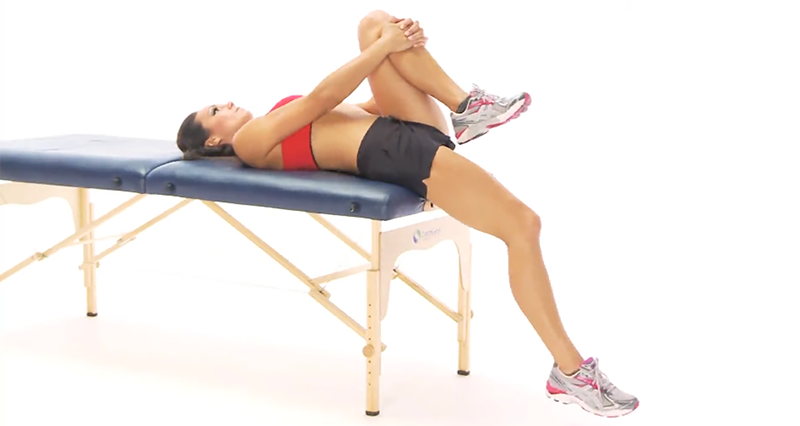The adductor squeeze test is for assessing groin injuries and muscle strength, particularly targeting the adductor muscles of the thigh.
What is a groin strain?
A groin strain, also known as a pulled groin, involves a tear in one of the adductor muscles inside the thigh. These injuries can vary from mild to very severe and often happen suddenly during activities like running, twisting, or turning.
Typically, you’ll feel a sharp pain in the groin area when the injury occurs. The location of the strain can be in the muscle’s belly or near the tendon at the pelvis. Depending on the severity of the tear, symptoms can range from mild discomfort to intense pain.

A groin strain or pulled groin is a tear of an adductor muscle on the inside of the thigh. They range from mild to very severe, usually occurring suddenly during exercise.
How to perform the adductor squeeze test
First, the patient lies on their back with their hips bent at 45 degrees. Place a fist or forearm between their knees. The patient squeezes their knees together against the resistance for 5 seconds, activating the adductor longus muscle strongly.
For the next step, keep the patient’s hips at 0 degrees flexion, stressing the adductors near their pelvic origin. Resist at the feet to enhance the challenge and increase the muscle effort, placing greater stress on the origin.
Lastly, move the patient’s hip into adduction. They should then bring their leg back to the centre against this resistance, testing the muscle’s strength when stretched. These steps are essential for evaluating the integrity and strength of the adductors and crucial for diagnosing and planning rehabilitation for groin injuries.

Interpreting groin assessment results
Check the strength of the patient’s squeeze; a strong squeeze indicates healthy muscles. Next, watch for pain or difficulty as they resist with straight hips, which might suggest issues near the pelvic attachment.
Finally, assess their ability to move their leg back against resistance; difficulty here indicates weakness when the muscle is stretched. These steps are crucial for diagnosing and planning treatment for groin injuries.
